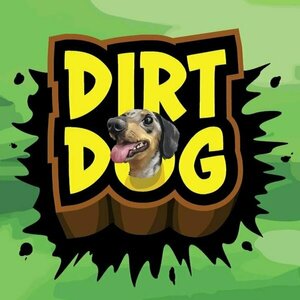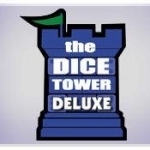
Dice Tower Deluxe
Podcast
The Dice Tower is an Internet podcast (a radio show you can download) about boardgames. Your hosts...
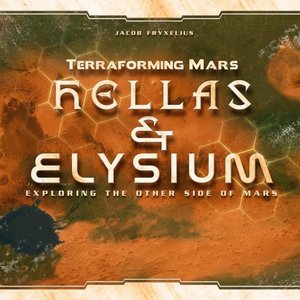
Terraforming Mars: Hellas & Elysium
Tabletop Game
Terraforming Mars: Hellas & Elysium, the first expansion for the 2016 smash-hit Terraforming Mars,...
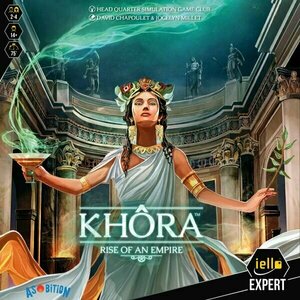
Khora: Rise of an Empire
Tabletop Game
In Khôra: Rise of an Empire, you are the ruler of a resplendent city in Ancient Greece. It's up to...
Purple Phoenix Games (2266 KP) rated Festival! in Tabletop Games
Nov 24, 2020
Festival! is a competitive set collection game for larger groups, three to seven players. It is set in a medieval kingdom and the game lasts for four festivals. During the game players will be collecting sets of cards to be scored immediately and collecting other cards to be scored at the game’s end.
DISCLAIMER: We were provided a prototype copy of this game for the purposes of this review. These are preview copy components, and I do not know for sure if the final components will be any different from these shown. Also, it is not my intention to detail every rule in the game, but give an idea of how the game plays. You are invited to download the rulebook, back the game through the forthcoming Kickstarter campaign, or through any retailers stocking it after fulfillment. -T
To setup, place the board in the middle of the table. Each player chooses a color of pawn to represent them and places one pawn on the 0 space upon the scoring track and the other pawn in the Festival! area upon the board. The game comes with four different types of cards and each type will be shuffled and placed face-down in stacks as in the photo below. Place the festival marker on either the 0 or 4 space (the rules are not clear, but it is to track the number of festivals, so just choose one) and give the first player busteeple to the youngest player. The game may now begin.
Festival! is played over several turns, but the first three turns will see players taking turns to travel to the different areas of the board and collect cards once they arrive. The initial Festival! area is located between the City and Village areas so a player can choose to move their pawn into either of those areas. As is printed on the board areas themselves, when players arrive in the Country they will immediately draw three Ensemble (green) cards to their hand and their turn is over. A trip to the Village affords the player two Ensemble cards to be drawn, while a visit to the City will allow a player to either draw one Ensemble card OR play as many cards from their hand as they choose. Finally, should the player’s wanderlust urge them to the Palace, they may draw a Palace card to be played to their tableau immediately. Movement from one area to the next is always done to the adjacent area. So if in the Village a player may only move to either the Country or the City. If in the Country a player may only move to the Village.
As I mentioned, the first three turns are head start rounds where players are merely collecting cards to amass a hand (of limit 7) of cards that can be played in sets in their personal tableau. These cards are divided into Exotic, Percussion, Melodic, and Choir cards. Players may play as many cards as they like when in the City, but will score bonus set and superset points if they are able to lay down multiple unique cards in each group. For example, a Horn card is worth one VP alone, but with three other unique Melodic cards earns bonus points for the entire set.
After the first three turns have been played, the first player will then flip a Festival card (stacked on the game board) at the beginning of each turn. It is from this stack that the four “Festival!” cards are located, and they are the time trackers for the game. If the result is “Preparation,” the turns continue as normal with no change. However, should the flipped card be a “Festival!” face, then players within range of the Festival Stages may claim a stage and participate in the festival. Participation in the festival simply means that players may play cards as normally played in the City, but then are entitled to one of the drawn Finale cards. These cards are scored at the end of the game and typically award bonus points for various reasons.
Play continues in this fashion of traveling the board areas to collect cards, performing in festivals, and earning the most amount of VP at game end, which is immediately following the fourth festival. The player with the most VP is the winner!
Components. Again, this is a prototype copy of the game, so the components may be different upon completion of a successful Kickstarter campaign. What we were provided, however, is a good-looking, though muted, game board, a ton of cards, and some painted wooden tokens. The tokens are fine, and I am sure will look different once the game is finalized. The cards are good, an interesting dimension, and the art upon them is good and simple. In fact, the cards’ art remind me of several computer icon sets, specifically Shadow or Sardi (though I use Sweet-Rainbow).
But how does it play? Okay, every time I get a new game I always play it solo multi-handed. During this initial play I had several questions for the designer about scenarios and other oddities that were not covered in the rulebook. He graciously, and immediately, answered my questions and the next play through ran quite smoothly. So I am sure the rulebook will be tweaked quite a bit before final production.
Once I was playing the right way the game ran smoothly and quickly. I found myself planning my turn in advance, however your success truly is dependent on the cards you draw. Ensemble cards are just the instruments, voices, and Minstrel (wild) cards, while the Palace cards are the rule-breaking fun cards. They allow increased travel, protection from certain cards in the deck, and other goodies I won’t spoil here. So having a nice collection of Palace cards can alleviate a lot of the random card draw issues that will plague players who refuse to grab the Palace cards. As I played more and more I found that I generally follow one strategy, but have to switch up tactics depending on my card draws. This is good and okay (not “bad”). Going in with a plan of attack is great, and being able to become flexible mid-game is enjoyable.
Overall this one is surprising to me because I was initially frustrated with the vague rulebook, but once I truly knew the real rules and how everything played together I found a real fondness for it. Festival! will probably never make it close to my Top 10 Games of All Time list, but for larger groups who are tiring of the hidden traitor or social deduction games, this one is a breath of fresh air. It can handle up to seven players, and is an easier teach than many other games for mid-to-large groups.
So if you are looking for something different for a weird player count, and you need some more medieval rock star games in your collection please check out Festival!. (Do I need the period there or am I covered with the exclamation point from the title of the game? I was not an English major.) I think you will be pleasantly surprised at how this unassuming set collection game (with aspects of take-that which I did not explore here) will perform. I am looking forward to following the Kickstarter campaign set to launch in Spring 2021, so keep it on your radars, people.

Pokémon TCG Online
Games and Entertainment
App
**AN INTERNET CONNECTION AND AN iPad WITH RETINA DISPLAY (iPad mini with Retina Display, iPad 3 or...
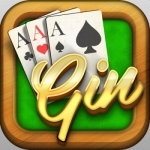
Gin Rummy ++
Games and Entertainment
App
One of the most popular card games, Gin Rummy is finally out!! Non stop Gin Rummy fun is finally...
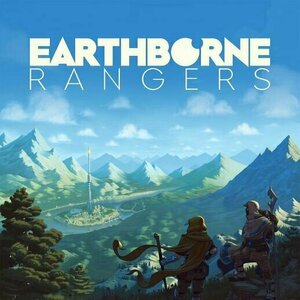
Earthborne Rangers
Tabletop Game
Earthborne Rangers is a customizable, cooperative card game set in the wilderness of the far future....

Yu-Gi-Oh! Duel Links
Games and Entertainment
App
Take on global Duelists in real-time and while on the go with "Yu-Gi-Oh! Duel Links"! - Star-studded...
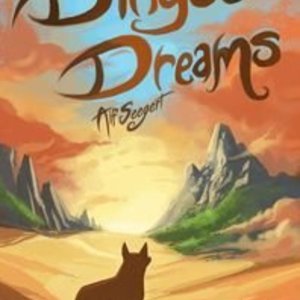
Dingo's Dreams
Tabletop Game
Dingo and his friends have gotten lost on Walkabout! Visit their dreams to lead them home! ...
Purple Phoenix Games (2266 KP) rated Dirt Dog in Tabletop Games
Oct 22, 2020
Dirt Dogs is a two or four player game where each side will be building an obstacle course through which the other side will run down a quarry animal. The obstacle course is a series of cards with icons needed to satisfy in order to pass, and each dog runner will have stats that correspond to these challenges that can also be manipulated with additional card play.
DISCLAIMER: We were provided a prototype copy of this game for the purposes of this review. These are preview copy components, and I do not know for sure if the final components will be different from these shown. You are invited to back the game through the Kickstarter campaign, or purchase through any retailers stocking it after fulfillment. -T
To setup, set aside the Entrance and Quarry cards from the large deck of brown-backed Burrow cards. Shuffle the Burrow cards to form a draw deck, and shuffle the gold-backed Obedience cards into their own pile. Each player (or team, but for this preview I will be reviewing from a two-player game perspective) will choose a dog breed card to use and place it in front of themselves. The icon on the bottom right hand side of the dog card signifies Moxie and an amount of Moxie tokens (bones) will be collected for use by the player. Reveal and place in an offer 12 Obedience cards to be drafted by the players. During the first round of play one player will be the builder and the other will be the first runner. Each player will draw five Burrow cards to begin and the game may now commence!
Dirt Dog will last three or more rounds (depending on what the players decide) and each round will have the roles of first builder and runner reversed. The builder will assemble an obstacle course of Burrow cards from their hand along with an Entrance to get in and a Quarry at the end. The cards are multipurpose in that the right side of the card lists obstacle tests the dogs will need to meet or surpass in order to clear it, and the left side includes icons that can be used by the runner player to assist their dog in a successful run. Similarly, Obedience cards may be played during the run to help overcome a particularly difficult obstacle, but then it will be unavailable for use to build the subsequent Burrow course.
Once a course has been decided and placed before the runner, they will analyze the tests on each card encountered and use their dog stats in addition to any cards they would like to play from hand. Should a runner successfully complete a course and capture the Quarry at the end they will collect the Quarry card and immediately add Dachshund tokens (weineeples?) to increase their stats per the card for the rest of the game.
Players then switch roles and whichever player ends the round with the most remaining Moxie will win the round and collect the Round Winner token (black animeeple because I can’t make out which breed it might be) notating such. The winner is the player who collected the most Round Winner tokens at the end of the three (or more) rounds!
Components. Again, this is a prototype copy of the game, and as such the components will not be exactly as shown in these photos. That said, for a prototype copy, the components are pretty decent! The cards are all nice, and the art on them is suuuuper cute. The layout of the cards is ok, and the iconography is easy to understand. The tokens and different -eeples are wonderful, though those may be different in the final version. It all depends on Kickstarter success though, folks, so you know the drill with backing games.
Dirt Dog reminds me of a couple games I have played, or at least certain mechanics. The building of the burrow runs reminds me of Boss Monster dungeon building as you are trying to foil the runner’s progress, but they can also use cards from hand to help overcome the obstacles. Also, many games now are including multi-use cards in the design, and I absolutely love it. Having to really determine the best use for a card – now during my run, or later to build a run for my opponent – is a wonderful layer that I enjoy. Of course building up a character’s stats is a mechanic I wish more games used. I mean, what’s the best part about playing RPGs? It’s level-up day!
This one is very cute to play and is quite light. I may have found a winning dog to use every time, but I will not spoil that for you. If it seems to become a problem in your plays, I suggest just removing that dog from those available to help overcome that. Remember – the winner of the round is the dog that ends the round with the most Moxie. That said, I still very much enjoy Dirt Dog. The art is great, features at least one of my previous breeds, and leaves itself open for expansions of new breeds and obstacles to be added later.
If you are looking for a cute dog-themed game with light rules and pretty good replayability, I suggest you check out Dirt Dog. It’s a fun and quick little card game that you can even play with AP-prone gamers as the choices are not necessarily do-or-die. Plus, enjoy the art along the way. It’s very nice. You are invited to back the game on Kickstarter that launches soon! Tell them Purple Phoenix Games sent you or I’ll sick a Jack Russell on your yard to dig dig dig until they wear themselves out. At least, that’s what MY JRT used to do…

